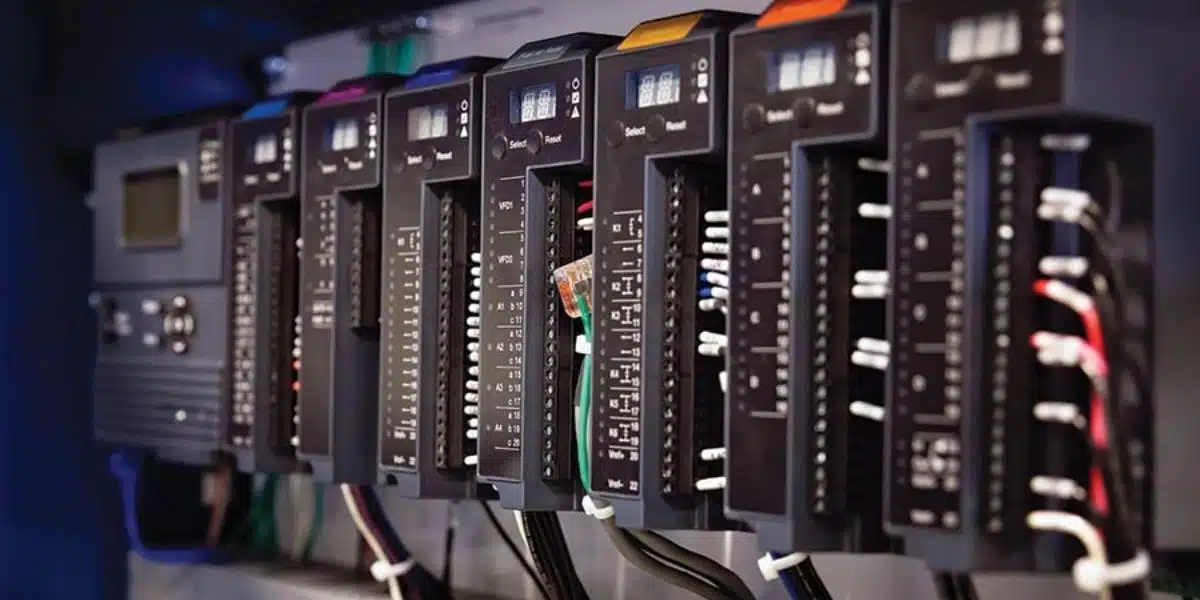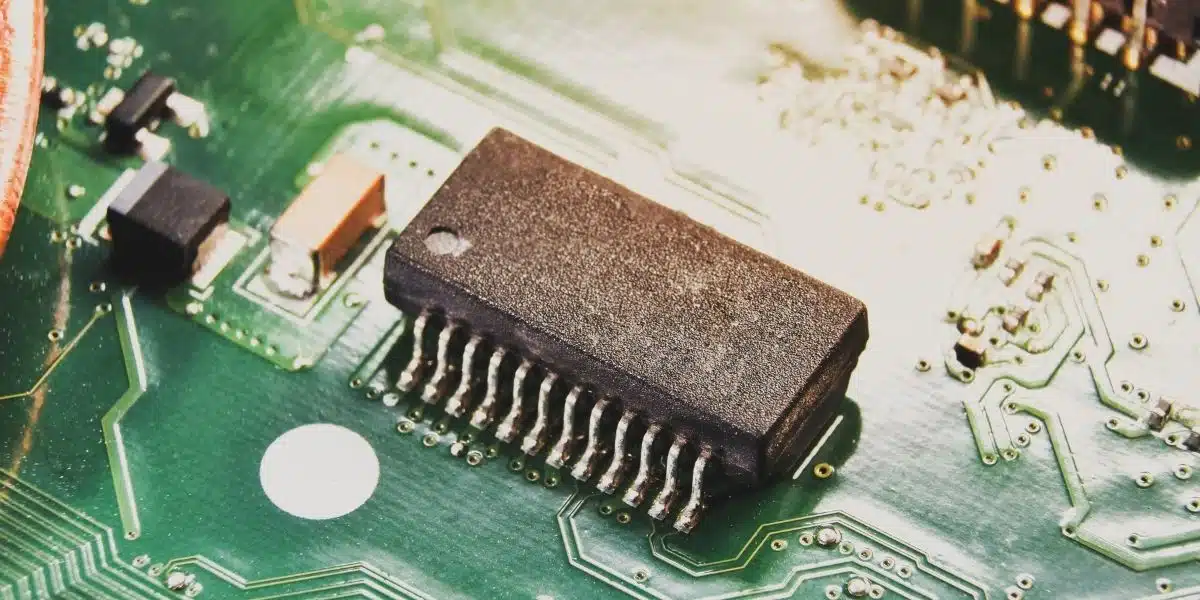Industrial integrated control and safety systems (ICSS) supplies integrated control to monitor and regulate operations while guaranteeing safety. ICSS combines sensors, actuators, controls, and safety systems. ICSS provides real-time process variable monitoring, analysis, and control through seamless integration, assuring industrial facility efficiency and safety by implementing effective control strategies.
Key Takeaways:
-
By seamlessly integrating control and safety functions, ICSS ensures efficiency and security in industrial operations.
-
The ICSS consists of DCSs, PLCs, SCADAs, Human-Machine Interfaces (HMIs), and Safety Instrumented Systems (SIS).
-
The adoption of ICSS offers numerous benefits, including increased efficiency and productivity, enhanced safety measures, and cost savings.
-
Managed start-up permissive, sequence control, and tuning of PID control loops are some of the control strategies used in ICSS that help keep operations running smoothly and without problems.
-
In spite of compatibility issues and cybersecurity concerns, ICSS implementation can be mitigated through careful planning and integration.
-
In the future, ICSS will integrate emerging technologies, use predictive maintenance techniques, and improve cybersecurity measures.
Introduction of ICSS
Integrated Control and Safety Systems (ICSS) are vital for modern industrial processes, particularly in sectors like oil and gas. ICSS brings together the functions of Distributed Control Systems (DCS), Programmable Logic Controllers (PLC), and Safety Instrumented Systems (SIS) to provide a unified platform for process optimization and safety management.
Essentially, ICSS acts as the central nervous system of a plant, overseeing and controlling every aspect of the operation. They ensure smooth, efficient production while prioritizing the safety of personnel and the environment. This is achieved through seamless data exchange between different components, real-time monitoring, and automated responses to abnormal situations.
-
Comprehensive Control: ICSS manages and optimizes production processes, preventing disruptions and ensuring compliance with safety standards.
-
Enhanced Safety: In the event of process upsets, ICSS automatically initiates safety procedures to prevent escalation and minimize potential damage.
-
Integrated Functionality: ICSS combines control and safety functions within a single system, streamlining operations and reducing potential points of failure.
-
Improved Efficiency: By integrating various subsystems, ICSS enhances operational efficiency and minimizes downtime.
-
Advanced Monitoring: ICSS provides real-time monitoring and data analysis, enabling operators to make informed decisions and respond effectively to changing conditions.
By integrating control, safety, and monitoring functions, ICSS helps industries achieve optimal operational efficiency while maintaining the highest safety standards.

Integration of Control & Safety Components
Integrated Control & Safety Systems (ICSS) include crucial components for industrial process safety and dependability. These components are essential to protecting people, assets, and the environment.
SIS
ICSS’s Safety Instrumented System (SIS) detects abnormal circumstances and takes preventative measures. SIS has sensors, logic solvers, and final features like valves or shutdown systems that can turn off any affected process units automatically during unplanned process upsets. This lowers the risks that come from equipment failure or human error. The process control system integrates these safety and operational components to ensure plant safety, effective monitoring, and efficient operation.
Fire & Gas Systems (F&G)
Fire detection, emergency shutdowns, and overpressure protection contribute to safe working environments. These systems are vital for environmental and personnel safety, ensuring smooth production processes while safeguarding the environment and the personnel working within the facilities. Safety Integrity Level (SIL) assessments quantify safety function dependability and effectiveness and are another essential part of ICSS.
SIL
SIL evaluations examine the safety system probability of failure on demand (PFD) and establish the performance level needed to reduce risk. Organizations may undertake SIL evaluations to ensure safety systems satisfy regulatory standards and safeguard against dangers.
Human Machin Interface (HMI)
ICSS also relies on the Human-Machine Interface (HMI) for real-time monitoring and control of safety-critical operations. HMIs allow operators to view process data, receive warnings, and act quickly in abnormal circumstances. With accessible interfaces and powerful visualization features, HMIs improve situational awareness and emergency decision-making.
Emergency Shutdown Systems (ESD)
In addition, ICSS’s Emergency Shutdown System (ESD) quickly shuts down equipment or processes in response to urgent safety hazards. Sensors, logic solvers, and final parts like shutdown valves or blowout preventers can start emergency shutdowns in milliseconds in ESD systems.
High-pressure alarms, fire and gas detection systems, or control room personnel trigger these systems. ESD systems help avoid catastrophic catastrophes and reduce accident damage to people, assets, and the environment.
Understanding of ICSS
Understanding Integrated Control and Safety Systems (ICSS) requires understanding how they integrate industrial process control and safety activities. ICSS seamlessly integrates control and safety functions to keep essential systems running smoothly. It provides holistic process management, monitoring, and control of routine and emergency conditions from a single platform. Implementing effective control strategies within these systems is crucial for managing production processes and ensuring safety when unwarranted process upset occurs.
Integrated Control and Safety Systems (ICSS) represent a significant advancement in industrial automation. They provide a unified platform that seamlessly merges process control and safety functions, leading to enhanced operational efficiency, improved safety, and increased system reliability.
As an ICSS engineer, understand that these systems are built on the foundation of core technologies like Distributed Control Systems (DCS), Programmable Logic Controllers (PLC), and Safety Instrumented Systems (SIS). This integration allows for real-time monitoring and control of both normal and emergency operations from a single interface, empowering operators to make informed decisions and respond quickly to critical events.
Furthermore, ICSS incorporates advanced diagnostics and cybersecurity measures to optimize system performance, troubleshoot issues, and protect against cyber threats. By adhering to industry standards like ISA/IEC 62443 and IEC 61511, ICSS ensures best practices for both cybersecurity and safety management.
-
Unified Platform: ICSS integrates control and safety functions into a single platform for streamlined operations.
-
Enhanced Situational Awareness: Real-time monitoring and control through a central interface improve operator response to critical events.
-
Increased Reliability: Combining control and safety operations enhances system resilience and ensures process continuity.
-
Advanced Diagnostics: Sophisticated diagnostic tools enable real-time troubleshooting and system optimization.
-
Robust Cybersecurity: ICSS prioritizes cybersecurity to protect critical infrastructure from cyberattacks and ensure operational safety.
By embracing ICSS, industries can achieve operational excellence, enhance safety, and maintain a competitive edge in today’s dynamic industrial landscape.

Basics of Integrated Control & Safety Systems
Integrated Control and Safety Systems (ICSS) act as the central hub of industrial automation, coordinating critical parameters such as temperature, pressure, and flow rate to ensure smooth and efficient industrial operations. These systems combine multiple control functions, facilitating real-time monitoring and control of industrial processes through components such as sensors, controllers, actuators, and communication networks. The integration of PCs and safety systems within ICSS ensures smooth operations, environmental protection, and personnel safety.
Sensors provide real-time data on process variables like pressure, temperature, and flow, which controllers use to compare against setpoints and issue control actions. Actuators, such as valves and motors, then physically adjust the processes based on controller commands, ensuring precise control over industrial operations. ICSS also incorporates communication networks that enable seamless data transmission between various components and allow for coordination in real time.
Human-Machine Interfaces (HMI) are vital in providing operators with intuitive, graphical tools to monitor and manage these operations. ICSS also features alarm management for rapid response to process anomalies, historical data logging for performance analysis, and remote access for enhanced flexibility.
The backbone of ICSS includes powerful controllers such as Programmable Logic Controllers (PLCs) and Distributed Control Systems (DCS), both of which execute logic-based commands to control processes and equipment. Supervisory Control and Data Acquisition (SCADA) systems provide real-time oversight, helping operators to optimize performance.
Overall, ICSS is essential for ensuring the safety, efficiency, and reliability of industrial processes by integrating control and safety functions onto a unified platform. Its advanced technologies and components are pivotal in improving productivity and operational innovation in modern industrial environments.
-
ICSS integrates control functions for industrial automation and process regulation.
-
Key components: sensors, controllers, actuators, and communication networks.
-
Sensors collect real-time process data; controllers process this data for decision-making.
-
Actuators physically adjust process parameters (flow, pressure, temperature).
-
Communication networks enable real-time coordination between components.
-
HMIs provide operators with graphical interfaces for real-time control and monitoring.
-
Features: alarm management, historical data logging, and remote access.
-
PLCs, DCS, and SCADA systems are core elements for process control and monitoring.
-
ICSS optimizes operational efficiency, safety, and productivity in industrial operations.
Overview of Key Components
Each component of an ICSS plays an essential role in ensuring the seamless operation of industrial processes. This system includes several key elements, including programmable logic controllers (PLCs), supervisory control and data acquisition (SCADA) systems, human-machine interfaces (HMIs), a gas detection system, and safety instrumented systems (SISs). These components work together to monitor and control various aspects of the plant’s operations.
Additionally, ICSS is crucial for maintaining environmental and personnel safety by incorporating features such as redundancy, real-time monitoring, and automated shutdown protocols to prevent accidents. A dedicated software library enhances the functionality of these integrated control systems by providing a range of reliable and proven function blocks that address specific customer requirements, ultimately leading to improved operational efficiency and total system integration.
Role of Each Component:
-
Programmable Logic Controllers (PLCs), which carry out logic-based commands to control machines and processes, include the electrical control system that oversees and manages the power distribution system for industrial facilities.
-
System of Supervisory Control and Data Acquisition (SCADA): SCADA systems provide real-time monitoring and control of industrial processes, integrating with the process control system to ensure plant safety and efficient operation.
-
HMI: Using intuitive graphical interfaces, human-machine interfaces (HMIs) allow users to interact with and control industrial processes.
-
SIS: Safety Instrumented Systems, which initiate safety protocols to detect and mitigate hazards such as overpressure, high temperatures, and toxic gas leaks.
differentiating Control & Safety Systems
While both contribute to overall operational integrity, control systems and safety systems have distinct functionalities within an industrial setting. Control systems focus on optimizing process variables like temperature, pressure, and flow to maximize production efficiency and product quality. They constantly adjust control loops to maintain desired setpoints and ensure smooth operation.
Safety systems, on the other hand, prioritize the prevention and mitigation of hazards that could lead to accidents, injuries, or environmental damage. They act as a safeguard for personnel, equipment, and the environment. Examples include Emergency Shutdown Systems (ESD), fire and gas detection systems, and Safety Instrumented Systems (SIS).
ICSS effectively merges these two distinct functions into a single platform. This integration offers several advantages, including streamlined operations, enhanced situational awareness, and reduced reaction times to abnormal events. By providing a holistic view of the process, ICSS empowers operators to effectively manage both routine operations and emergency situations from a unified interface.
-
Primary Goal:
-
Control Systems: Optimize process variables for production efficiency.
-
Safety Systems: Prevent and mitigate hazards to ensure safety.
-
-
Focus:
-
Control Systems: Maximize uptime, throughput, and product quality.
-
Safety Systems: Protect personnel, equipment, and the environment.
-
-
Response Time:
-
Control Systems: Respond quickly to process changes to maintain stability.
-
Safety Systems: React even faster to prevent hazards from escalating.
-
-
Reliability:
-
Control Systems: Require reliable operation for efficient production.
-
Safety Systems: Demand higher reliability with redundancy and fail-safe mechanisms to ensure safety in critical situations.
-
-
Standards:
By understanding these differences and leveraging the integrated capabilities of ICSS, industrial facilities can achieve a balance between operational efficiency and safety.

Critical Components of Safety Instrumented System
Safety Instrumented Systems (SIS) are the backbone of safety within Integrated Control and Safety Systems (ICSS). They are engineered to detect potentially hazardous conditions and automatically initiate protective measures to prevent accidents and mitigate their consequences.
As an ICSS engineer, understand that a robust SIS comprises several critical components. Sensors are the eyes and ears of the system, continuously monitoring process variables like pressure, temperature, and flow rate. Logic solvers act as the brain, processing sensor data and determining if a hazardous situation is developing. If a hazard is detected, the logic solver sends signals to final elements, such as shutdown valves or emergency shutdown systems (ESD), to bring the process to a safe state.
Another vital aspect of SIS is the Safety Integrity Level (SIL) assessment. This rigorous analysis quantifies the reliability of the safety function and ensures it meets the required performance standards to mitigate risks effectively. Human-Machine Interfaces (HMIs) also play a key role, providing operators with real-time visibility and control over safety-critical operations.
-
Sensors: Continuously monitor process variables for potential hazards.
-
Logic Solvers: Process sensor data and initiate protective actions.
-
Final Elements: Execute safety measures (e.g., shutdown valves, ESD systems).
-
Safety Integrity Level (SIL): Quantifies the reliability of the safety function.
-
Human-Machine Interface (HMI): Provides operators with real-time monitoring and control.
By integrating these components and adhering to stringent safety standards, ICSS ensures a high level of safety in industrial processes, protecting personnel, the environment, and valuable assets.
Advantages of ICSS
ICSS offers a compelling array of advantages for industrial operations by seamlessly integrating control and safety functions. This integration leads to a more efficient, reliable, and safer operational environment.
From my perspective as an ICSS engineer, the benefits are clear. First, ICSS simplifies system architecture by eliminating the need for separate control and safety systems. This reduces hardware costs, streamlines maintenance, and improves overall system manageability. Secondly, the unified platform enhances situational awareness, enabling operators to respond rapidly and effectively to abnormal conditions and potential hazards.
Furthermore, ICSS facilitates proactive safety measures through real-time threat identification and mitigation. This reduces the risk of accidents, protects personnel and assets, and minimizes environmental impact. Enhanced control and optimization features allow operators to fine-tune process parameters and improve productivity. Advanced diagnostics and predictive maintenance capabilities help identify and address potential issues before they escalate, maximizing uptime and ensuring process continuity.
-
Reduced Costs: Simplified system architecture lowers hardware and maintenance expenses.
-
Enhanced Safety: Proactive safety measures protect personnel, assets, and the environment.
-
Improved Efficiency: Streamlined operations and optimized control improve productivity and reduce downtime.
-
Increased Reliability: Redundancy and fault tolerance ensure continuous operation and minimize disruptions.
-
Predictive Maintenance: Advanced diagnostics and real-time monitoring enable proactive maintenance and reduce downtime.
By adopting ICSS, industrial facilities can achieve operational excellence, enhance safety, and gain a competitive advantage in today’s demanding industrial landscape.

Challenges & Considerations
Control and safety system integration is complex in industrial contexts. They require distinct communication protocols and hardware, making compatibility difficult. Integrating several control and safety tasks while retaining system dependability and performance is another issue. Integrating standard and safety programs within a single CPU can enhance operational efficiency and minimize potential points of failure.
Competing Goals
Control and safety systems may have competing goals; thus, they must be balanced. When integrating control and safety systems, cybersecurity is crucial because cyber attacks can undermine system integrity and safety. For safe and dependable operation, control and safety systems must comply with industry norms and regulations. An electrical control system plays a crucial role in managing and monitoring the power distribution system, enhancing operational efficiency and safety by integrating with other systems like the Process Control System (PCS) and Safety Instrumented System (SIS).
System Performance Optimization
Another difficulty is optimizing system performance while retaining dependability and safety. Optimizing performance requires careful design and configuration. Integration also requires control and safety system communication. Data sharing between systems requires compatible communication methods. To reduce failure risk, you need redundancy and fault tolerance. Ensuring system operation and uncovering faults before deployment, control, and safety system integration involves comprehensive testing and validation: test control-safety coordination and system responsiveness with simulated scenarios.
Cybersecurity Challenges
Integrating control and safety systems requires addressing cybersecurity issues. Malware, hacking, and illegal access can compromise integrated system integrity and safety. Protecting safety and control systems from cyberattacks is essential. Managing cybersecurity risks and protecting integrated systems from attacks also requires monitoring and upgrades.
Regulatory Compliance
Control and safety system integration must also address regulatory compliance. Control and safety systems must meet ISA-84 for safety instrumented systems and IEC 61508 for functional safety. Regulatory compliance requires documentation, testing, and certification. It’s essential to maintain compliance and correct non-conformities and flaws found during assessments.
Achieving success requires integrating control and safety systems. These include complexity management, performance optimization, communication interoperability, cybersecurity risk mitigation, and regulatory compliance. By carefully addressing these problems and issues, organizations may combine control and safety systems to improve industrial efficiency, dependability, and safety.
Compatibility Issues
ICSS offers many benefits, but its implementation presents several challenges and considerations for industrial operators. The key challenges include compatibility issues, cybersecurity concerns, and specialized skills and training requirements. Effective control strategies are essential for managing these challenges, ensuring smooth production, and preventing equipment failure and human error. Additionally, integrating a robust process control system within the ICSS framework is crucial for ensuring plant safety, effective monitoring, and efficient operation.
Skills and Training
The operation and maintenance of ICSS systems require specialized skills and training, necessitating ongoing workforce development and education investments. The control strategies implemented by these systems are crucial for ensuring smooth production and safety in industrial plants.
The process control system integrates various safety and operational components within industrial plants, playing a critical role in ensuring plant safety, effective monitoring, and efficient operation.
Application of ICSS
Oil and Gas Industry
ICSS ensures the safety of personnel and equipment in challenging offshore environments by monitoring and controlling drilling operations. It is very important for ICSS to use control strategies like managing start-up permissive, sequence control, and tuning of PID control loops to keep operations running smoothly and without problems. These strategies contribute significantly to smooth production and safety in industrial plants. The process control system integrates various safety and operational components, including the Safety Instrumented System (SIS), to ensure plant safety, effective monitoring, and efficient operation.
Chemical Plants
Chemical plants rely on ICSS to monitor and regulate complex chemical processes, ensuring compliance with safety standards and preventing hazardous incidents. Implementing effective control strategies within these systems is crucial for managing production processes and ensuring safety. They help regulate operations, handle disruptions, and maintain smooth production while preventing equipment failure and human error. A process control system integrates various safety and operational components within industrial plants, playing a critical role in ensuring plant safety, effective monitoring, and efficient operation.
Power Generation
With ICSS, electricity production is more stable and reliable, as turbines, generators, and other equipment perform more efficiently. The control strategies implemented by ICSS, such as managing start-up permissive, sequence control, and tuning of PID control loops, ensure smooth production and safety in industrial plants. This integration helps prevent process upsets and maintain operational reliability. Additionally, the process control system plays a critical role in integrating various safety and operational components within industrial plants, ensuring plant safety, effective monitoring, and efficient operation.
Future Trends in ICSS
Integration with Emerging Technologies
The integration of emerging technologies like AI and IoT is transforming ICSS into even more powerful tools for industrial automation. As an ICSS engineer, it has immense potential in leveraging these advancements to enhance predictive maintenance and optimize operational efficiency. By enabling real-time data analysis and proactive decision-making, AI and IoT empower us to minimize downtime, improve reliability, and ultimately achieve higher levels of performance in industrial operations.
Predictive Maintenance
ICSS leverages data analytics and machine learning to predict equipment failures and optimize maintenance schedules, reducing costs and downtime. Effective control strategies ensure smooth production and safety. The process control system integrates various safety and operational components for effective monitoring and efficient operation.
Cybersecurity Advancements
To protect against emerging threats, ICSS systems are evolving to include advanced cybersecurity measures such as encryption, authentication, and intrusion detection. These advancements ensure that standard and safety programs coexist effectively, enhancing operational efficiency and minimizing potential points of failure. Additionally, the electrical control system plays a crucial role in managing and monitoring the power distribution system for industrial facilities, further integrating with other systems like the Process Control System (PCS) and Safety Instrumented System (SIS).

Regulatory Compliance
Industry Standards
ICSS systems must adhere to industry-specific standards and guidelines, such as ISA-84 for process safety and ISA-18 for alarm management. These standards ensure that standard and safety programs are effectively integrated within a single CPU, enhancing operational efficiency and minimizing potential points of failure. Additionally, the electrical control system plays a crucial role in managing and monitoring the power distribution system for industrial facilities, enhancing operational efficiency and safety by integrating with other systems like the Process Control System (PCS) and Safety Instrumented System (SIS).
Safety Regulations
Compliance with safety regulations like PSM (Process Safety Management) and COMAH (Control of Major Accident Hazards) is crucial to mitigate risks and ensure safety. Integrating standard and safety programs within ICSS enhances operational efficiency. The electrical control system in ICSS manages power distribution, working seamlessly with other systems like PCS and SIS to improve efficiency and safety.
Selecting the Right ICSS Solution
Scalability
Select ICSS solutions that are scalable for future growth without major reconfiguration. Effective control strategies within these systems ensure smooth production and safety by managing start-up, sequence control, and tuning of PID loops to prevent process upsets. The process control system plays a crucial role in integrating safety and operational components, ensuring plant safety, effective monitoring, and efficient operation.
Compatibility
To ensure a smooth transition to a new ICSS, verify compatibility with existing systems and equipment. Thoroughly assess your current infrastructure and engage with vendors to understand interoperability. Utilize communication gateways and standard protocols to bridge any gaps. Involve qualified personnel to oversee the integration and address potential issues, ensuring seamless production and maintaining operational reliability.
Reliability
When choosing an ICSS, prioritize reliability and performance. Look for high uptime, low failure rates, and strong vendor support, including technical assistance, training, and software updates. These factors ensure continuous operation, system dependability, and personnel preparedness to handle any issues, ultimately leading to a more informed decision aligned with your operational needs.
Support Services
When evaluating ICSS vendors, robust support is crucial. As an ICSS engineer, the emphasis should be on the importance of comprehensive technical assistance, including 24/7 availability to minimize downtime and ensure smooth operation. Thorough training programs tailored to the organization’s needs are essential for personnel to effectively manage the system. Regular software updates are vital for maintaining optimal performance, security, and compliance with industry standards. A dedicated customer portal with resources like user manuals and FAQs further empowers users to resolve issues and deepen their system understanding.
-
Comprehensive technical support: 24/7 availability for prompt issue resolution.
-
Robust training programs: Tailored to the organization’s needs, covering basic operations to advanced troubleshooting.
-
Regular software updates: enhancements, new functionalities, and security patches to maintain optimal performance and compliance.
-
Customer portal: Provides access to resources like user manuals, FAQs, and troubleshooting guides for self-help and continuous learning.

Conclusion
A cornerstone of modern industrial automation, Integrated Control and Safety Systems (ICSS) offers seamless integration of control and safety functions to ensure efficiency and security.
By understanding the fundamental components, benefits, challenges, applications, and future trends of ICSS, industrial operators can optimize their processes and increase safety measures, thereby driving productivity, profitability, and sustainability.
ICSS systems are poised to play an even more significant role in shaping the future of industrial automation as technology continues to evolve and emerging trends such as IoT, AI, and predictive maintenance are adopted. With the tools they need, organizations will be able to thrive in a complex and competitive environment.
Frequently Asked Questions:







